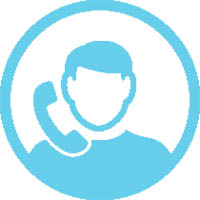
There are a number of methods and strategies that can be used to obtain information from internal and external sources. Some data collection sources are already in place, such as the questions addressed during your program self-assessment and the interview questions answered by families when they are developing their Family Partnership Agreement.
You will select data collection methods that are likely to provide answers to the key questions you identified in Step 2. Make sure that whatever methods you select will enable you to supply information about your service area as required in the HSPPS 45 CFR §1302.11.
There are also a number of methods and strategies that you can use to gather information. It is a good idea to include both verbal and written strategies. For example, some families may prefer to speak with a team member as they discuss the Head Start program; others may prefer to fill out a survey. An important consideration is to think about which method is likely to result in the best quality data.
In addition, if you want to obtain answers from a large group of people, consider which method is likely to elicit a high number of responses. A long written survey may take too much time for busy parents, while a 15-minute phone call might be a quicker way to ask the same questions. Also, a written survey might be intimidating for parents who are uncomfortable with English reading and writing.
Table 3.1 presents commonly used community assessment data collection methods. Keep in mind that it is sometimes appropriate to combine methods to gather additional detail. For example, after a focus group session, participants could be asked to fill out a survey.
 Tell Me More
Tell Me More
For a worksheet that can be used to help as data is being collected and reviewed see Appendix A-3: Community Assessment Analysis Worksheet.

New Director Tip
State and Regional Associations
Grantees in many states and regions have partnered together to gather and aggregate the statewide Head Start data needed for community assessments.

New Director Tip
Existing Community Assessments
Do not overlook existing community assessments done by other organizations. United Way, health organizations, and other local coalitions and agencies may have community assessment data that will complement the data that you collect enabling further comparisons and insight.
Table 3.1: Data Collection Methods
|
|
Method |
Advantages |
Disadvantages |
|---|---|---|---|
|
|
Written Survey or Questionnaire |
|
|
|
|
In-person Interview |
|
|
|
|
Phone Interview |
|
|
|
|
Focus Group |
|
|
|
|
Large-Group Meeting |
|
|
Read more:
Resource Type: Article
National Centers: Program Management and Fiscal Operations
Audience: Directors and Managers
Last Updated: August 4, 2023





